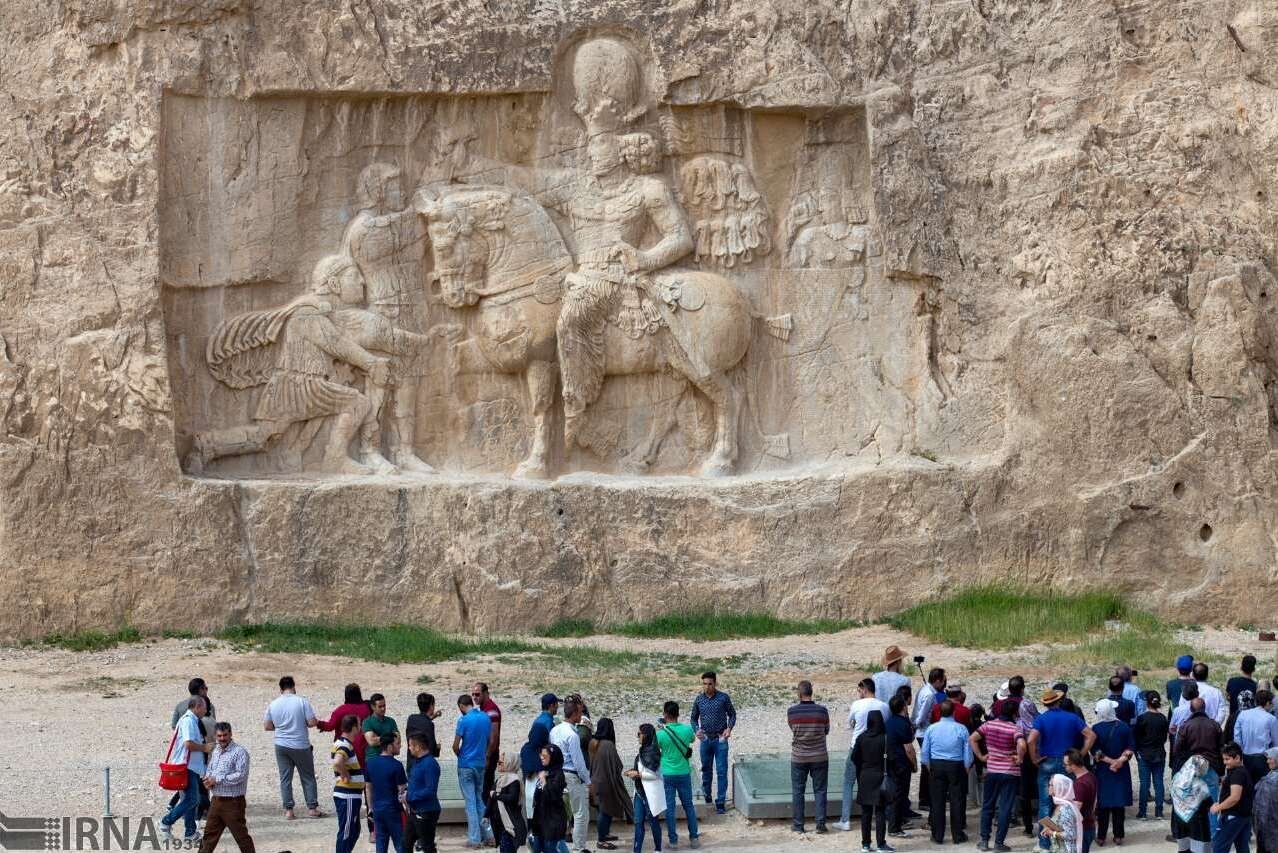Majestic Naqsh-e Rostam: efforts underway to enhance landscape architecture

TEHRAN – The majestic site of Naqsh-e Rostam is undergoing significant landscape architecture enhancements to improve safety and the visitor experience.
On Saturday, Alireza Askari Chaverdi, who presides over Persepolis World Heritage site, which is situated near Naqsh-e Rostam, announced the implementation of a comprehensive plan aimed at “re-organizing and securing” the historical site.
He said the ancient necropolis, which is renowned for its rock-cut tombs, bas-reliefs, and the Ka’ba-ye Zoroaster, is receiving updated and safer pathways for tourists.
“In our current efforts, we have redesigned and installed new guide signs,” Chaverdi stated. “Additionally, site furnishings have been repaired and renovated, and the area has been cleared of weeds.”
Moreover, the restoration team has also taken measures to prevent further weed growth through strategic spraying, the official added.
Chaverdi highlighted the repair of the site’s gazebos and noted that the enhancement plan includes ongoing restoration work and archaeological and geological studies.
The work is aimed to enhance Naqsh-e Rostam’s historical integrity while ensuring a safer and more informative experience for visitors, he explained.
Naqsh-e Rostam, an awe-inspiring testament to ancient craftsmanship, showcases a series of breathtaking Sassanid bas-relief carvings.
The necropolis houses four imposing tombs believed to be the final resting places of Persian Achaemenid kings—Darius II, Artaxerxes I, Darius I, and Xerxes I, arranged left to right along the cliff face. However, scholarly discourse persists regarding their precise identities.
Above these majestic tombs, intricate bas-reliefs echo the grandeur of Persepolis, portraying kings seated on thrones, upheld by figures symbolizing the diverse nations under their rule. Additionally, within the vicinity of Persepolis lie two similar graves, likely belonging to Artaxerxes II and Artaxerxes III.
Beneath the solemn funerary chambers, seven Sassanian-era bas-reliefs adorn the cliffside, vividly depicting imperial conquests and regal ceremonies. Informative signboards accompany each scene, offering detailed descriptions in English.
At the base of Naqsh-e Rostam stands the enigmatic Ka’bah-ye Zardusht, or the Kaaba of Zoroaster. This square structure, approximately 12 meters tall and 7 meters wide, likely dates back to the early 6th century BC, featuring inscriptions from various periods thereafter.
While the historical significance of Ka’bah-ye Zardusht is evident, its original function remains shrouded in mystery. Some speculate it served as a tomb for Achaemenian royalty or perhaps as an altar, potentially dedicated to the goddess Anahiti, associated with royalty, war, and fertility.
The name Naqsh-e Rostam, translates to “Picture of Rostam,” pays homage to the legendary Iranian hero celebrated in the Shahnameh and Persian mythology. In ancient times, locals mistakenly believed the carvings beneath the tombs depicted scenes from Rostam’s tales.
AM
Leave a Comment